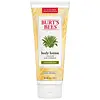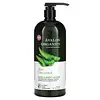What's inside
What's inside
 Key Ingredients
Key Ingredients

 Benefits
Benefits

 Concerns
Concerns

 Ingredients Side-by-side
Ingredients Side-by-side

Water
Skin ConditioningGlycerin
HumectantDecyl Cocoate
EmollientHelianthus Annuus Seed Oil
EmollientBeeswax
Emulsion StabilisingButyrospermum Parkii Butter
Skin ConditioningPolyglyceryl-3 Stearate
EmulsifyingGlyceryl Stearate Citrate
EmollientCetyl Alcohol
EmollientCocos Nucifera Oil
MaskingOlea Europaea Fruit Oil
MaskingVitis Vinifera Seed Oil
EmollientAloe Barbadensis Leaf Juice
Skin ConditioningButtermilk Powder
Skin ConditioningChamomilla Recutita Flower Extract
MaskingCalendula Officinalis Flower Extract
MaskingCentaurea Cyanus Flower Extract
AstringentTilia Cordata Flower Extract
Skin ConditioningRosmarinus Officinalis Leaf Extract
AntimicrobialAnthemis Nobilis Flower Extract
MaskingHypericum Perforatum Extract
AntimicrobialParfum
MaskingTocopherol
AntioxidantSucrose Stearate
EmollientXanthan Gum
EmulsifyingGlycine Soja Oil
EmollientCanola Oil
EmollientLactic Acid
BufferingCitric Acid
BufferingGlucose
HumectantSodium Chloride
MaskingSodium Stearoyl Lactylate
EmulsifyingSodium Benzoate
MaskingMagnesium Aluminum Silicate
AbsorbentPotassium Sorbate
PreservativePotassium Iodide
AntimicrobialPotassium Thiocyanate
StabilisingPhenoxyethanol
PreservativeGlucose Oxidase
StabilisingLactoperoxidase
StabilisingLimonene
PerfumingWater, Glycerin, Decyl Cocoate, Helianthus Annuus Seed Oil, Beeswax, Butyrospermum Parkii Butter, Polyglyceryl-3 Stearate, Glyceryl Stearate Citrate, Cetyl Alcohol, Cocos Nucifera Oil, Olea Europaea Fruit Oil, Vitis Vinifera Seed Oil, Aloe Barbadensis Leaf Juice, Buttermilk Powder, Chamomilla Recutita Flower Extract, Calendula Officinalis Flower Extract, Centaurea Cyanus Flower Extract, Tilia Cordata Flower Extract, Rosmarinus Officinalis Leaf Extract, Anthemis Nobilis Flower Extract, Hypericum Perforatum Extract, Parfum, Tocopherol, Sucrose Stearate, Xanthan Gum, Glycine Soja Oil, Canola Oil, Lactic Acid, Citric Acid, Glucose, Sodium Chloride, Sodium Stearoyl Lactylate, Sodium Benzoate, Magnesium Aluminum Silicate, Potassium Sorbate, Potassium Iodide, Potassium Thiocyanate, Phenoxyethanol, Glucose Oxidase, Lactoperoxidase, Limonene
Water
Skin ConditioningAloe Barbadensis Leaf Juice
Skin ConditioningGlycerin
HumectantCarthamus Tinctorius Seed Oil
MaskingGlyceryl Stearate Se
EmulsifyingStearic Acid
CleansingAvena Sativa Bran
AbrasiveBeta-Glucan
Skin ConditioningCalendula Officinalis Flower Extract
MaskingChamomilla Recutita Flower Extract
MaskingLavandula Angustifolia Flower Extract
CleansingButyrospermum Parkii Butter
Skin ConditioningCocos Nucifera Oil
MaskingLinum Usitatissimum Seed Oil
PerfumingOlea Europaea Fruit Oil
MaskingPersea Gratissima Oil
Skin ConditioningArginine
MaskingBisabolol
MaskingCaprylic/Capric Triglyceride
MaskingCetyl Alcohol
EmollientPotassium Hydroxide
BufferingSodium Hyaluronate
HumectantSodium Stearoyl Glutamate
CleansingStearyl Alcohol
EmollientTocopheryl Acetate
AntioxidantXanthan Gum
EmulsifyingAlcohol
AntimicrobialBenzyl Alcohol
PerfumingPotassium Sorbate
PreservativeSodium Benzoate
MaskingWater, Aloe Barbadensis Leaf Juice, Glycerin, Carthamus Tinctorius Seed Oil, Glyceryl Stearate Se, Stearic Acid, Avena Sativa Bran, Beta-Glucan, Calendula Officinalis Flower Extract, Chamomilla Recutita Flower Extract, Lavandula Angustifolia Flower Extract, Butyrospermum Parkii Butter, Cocos Nucifera Oil, Linum Usitatissimum Seed Oil, Olea Europaea Fruit Oil, Persea Gratissima Oil, Arginine, Bisabolol, Caprylic/Capric Triglyceride, Cetyl Alcohol, Potassium Hydroxide, Sodium Hyaluronate, Sodium Stearoyl Glutamate, Stearyl Alcohol, Tocopheryl Acetate, Xanthan Gum, Alcohol, Benzyl Alcohol, Potassium Sorbate, Sodium Benzoate
Ingredients Explained
These ingredients are found in both products.
Ingredients higher up in an ingredient list are typically present in a larger amount.
Aloe Barbadensis Leaf Juice comes from leaves of the aloe plant. Aloe Barbadensis Leaf Juice is best known for helping to soothe sunburns. It is also anti-inflammatory, moisturizing, antiseptic, and can help heal wounds.
Aloe is packed with good stuff including Vitamins A, C, and E. These vitamins are antioxidants, which help fight free-radicals and the damage they may cause. Free-radicals are molecules that may damage your skin cells, such as pollution.
Aloe Barbadensis Leaf Juice also contains sugars. These sugars come in the form of monosaccharides and polysaccharides, folic acid, and choline. These sugars are able to help bind moisture to skin.
It also contains minerals such as calcium, 12 anthraquinones, fatty acids, amino acids, and Vitamin B12.
Learn more about Aloe Barbadensis Leaf JuiceThis ingredient is also known as shea butter. It is an effective skin hydrator and emollient.
Emollients help soothe and soften your skin. It does this by creating a protective film on your skin. This barrier helps trap moisture and keeps your skin hydrated. Emollients may be effective at treating dry or itchy skin.
Shea butter is rich in antioxidants. Antioxidants help fight free-radicals, or molecules that may harm the body. It is also full of fatty acids including stearic acid and linoleic acid. These acids help replenish the skin and keep skin moisturized.
While Shea Butter has an SPF rating of about 3-4, it is not a sunscreen replacement.
Shea butter may not be fungal acne safe. We recommend speaking with a professional if you have any concerns.
Learn more about Butyrospermum Parkii ButterCalendula Officinalis Flower Extract comes from the common Marigold plant. This ingredient is a skin conditioner.
Marigolds contain flavonoids. Flavonoids are a group of substances found naturally in plants. They possess antioxidant and inflammation properties.
This ingredient soothes skin inflammation by inhibiting inhibiting a part of the inflammation process.
Marigolds have been used in traditional medicine throughout Asia and Europe.
Learn more about Calendula Officinalis Flower ExtractCetyl Alcohol is a fatty alcohol. Fatty Alcohols are most often used as an emollient or to thicken a product.
Its main roles are:
Though it has "alcohol" in the name, it is not related to denatured alcohol or ethyl alcohol.
The FDA allows products labeled "alcohol-free" to have fatty alcohols.
Learn more about Cetyl AlcoholChamomilla Recutita Flower Extract comes from the Chamomile flower.
Chamomile is rich in antioxidants and has anti-inflammatory properties. Several compounds found in chamomile help with soothing, such as bisbolol.
Antioxidant components in chamomile make it an effective ingredient to help slow the signs of aging. Antioxidants help fight free-radical molecules, or molecules that may damage your skin.
Essential oils from chamomile have been found to improve wound healing due to its antimicrobial properties.
Ancient Greeks and Egyptians used Chamomile to treat skin redness and dryness. Chamomile has also been used to help treat stomach issues.
Learn more about Chamomilla Recutita Flower ExtractCocos Nucifera Oil is obtained from the kernels of the coconut fruit. In other words, this is coconut oil.
Coconut Oil is rich in fatty acids with lauric acid making up the majority of these. It also contains linoleic acid. Due to this high fatty acid content, coconut oil helps trap moisture and soften skin.
Despite being antibacterial, coconut oil may not be great for acne-prone skin. It is comedogenic and may clog pores. This ingredient may not be safe for malassezia or fungal acne.
Note: Coconut Oil should not replace your sunscreen for UV protection. Studies show it only blocks about 20% of UV.
This oil is non-volatile and has a light scent.
The term 'fragrance' is not regulated in many countries. In many cases, it is up to the brand to define this term. For instance, many brands choose to label themselves as "fragrance-free" because they are not using synthetic fragrances. However, their products may still contain ingredients such as essential oils that are considered a fragrance.
Learn more about Cocos Nucifera OilGlycerin is already naturally found in your skin. It helps moisturize and protect your skin.
A study from 2016 found glycerin to be more effective as a humectant than AHAs and hyaluronic acid.
As a humectant, it helps the skin stay hydrated by pulling moisture to your skin. The low molecular weight of glycerin allows it to pull moisture into the deeper layers of your skin.
Hydrated skin improves your skin barrier; Your skin barrier helps protect against irritants and bacteria.
Glycerin has also been found to have antimicrobial and antiviral properties. Due to these properties, glycerin is often used in wound and burn treatments.
In cosmetics, glycerin is usually derived from plants such as soybean or palm. However, it can also be sourced from animals, such as tallow or animal fat.
This ingredient is organic, colorless, odorless, and non-toxic.
Glycerin is the name for this ingredient in American English. British English uses Glycerol/Glycerine.
Learn more about GlycerinOlea Europaea Fruit Oil is the fixed oil obtained from the ripe fruit of the Olive. In other words - olive oil.
The primary contents of olive oil are glycerides of the fatty acids linoleic, oleic and palmitic.
Olive oil also contains antioxidants such as Vitamin E. Antioxidants may help reduce signs of aging by fighting unstable free-radical molecules. It also contains Vitamins A (retinol), D, and K.
The squalene in olive oil makes it a great emollient. Emollients help soothe and soften your skin by trapping moisture in. This makes olive oil a great skin moisturizer.
Studies show olive oil to have antibacterial and antifungal properties in low concentrations. Another study found olive oil irritated sensitive oily skin. We always recommend speaking with a professional about using this ingredient in your routine.
Due to the fatty acid content, this ingredient may not be fungal-acne safe.
Learn more about Olea Europaea Fruit OilPotassium Sorbate is a preservative used to prevent yeast and mold in products. It is commonly found in both cosmetic and food products.
This ingredient comes from potassium salt derived from sorbic acid. Sorbic acid is a natural antibiotic and effective against fungus.
Both potassium sorbate and sorbic acid can be found in baked goods, cheeses, dried meats, dried fruit, ice cream, pickles, wine, yogurt, and more.
You'll often find this ingredient used with other preservatives.
Learn more about Potassium SorbateSodium Benzoate is a preservative. It's used in both cosmetic and food products to inhibit the growth of mold and bacteria. It is typically produced synthetically.
Both the US FDA and EU Health Committee have approved the use of sodium benzoate. In the US, levels of 0.1% (of the total product) are allowed.
Sodium benzoate works as a preservative by inhibiting the growth of bacteria inside of cells. It prevents the cell from fermenting a type of sugar using an enzyme called phosphofructokinase.
It is the salt of benzoic acid. Foods containing sodium benzoate include soda, salad dressings, condiments, fruit juices, wines, and snack foods.
Studies for using ascorbic acid and sodium benzoate in cosmetics are lacking, especially in skincare routines with multiple steps.
We always recommend speaking with a professional, such as a dermatologist, if you have any concerns.
Learn more about Sodium BenzoateWater. It's the most common cosmetic ingredient of all. You'll usually see it at the top of ingredient lists, meaning that it makes up the largest part of the product.
So why is it so popular? Water most often acts as a solvent - this means that it helps dissolve other ingredients into the formulation.
You'll also recognize water as that liquid we all need to stay alive. If you see this, drink a glass of water. Stay hydrated!
Learn more about WaterXanthan gum is used as a stabilizer and thickener within cosmetic products. It helps give products a sticky, thick feeling - preventing them from being too runny.
On the technical side of things, xanthan gum is a polysaccharide - a combination consisting of multiple sugar molecules bonded together.
Xanthan gum is a pretty common and great ingredient. It is a natural, non-toxic, non-irritating ingredient that is also commonly used in food products.
Learn more about Xanthan Gum